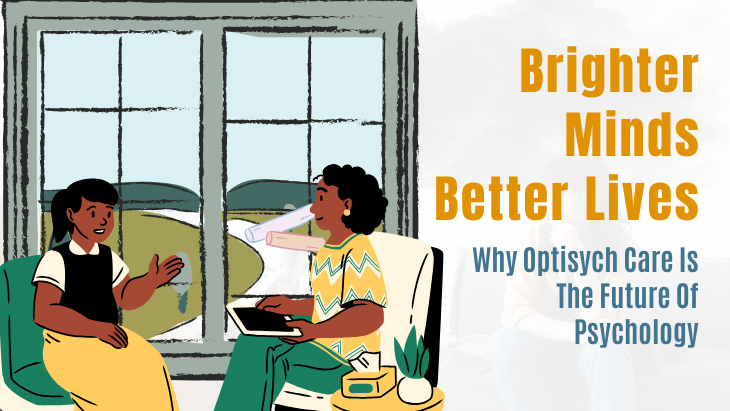The world is speeding up at a pace never known before, and with it comes the change in our attitude towards health and wellness Online Therapy Platform. No more waiting weeks to schedule an appointment, driving to a clinic, and sitting face-to-face with a therapist. Healing is at your fingertips now hanks to the boom in online therapy and digital wellness.
In an age where awareness of mental health has never been higher, the convenience, accessibility, and success of online therapy are revolutionizing how we pursue emotional wellness. From AI chatbots to virtual counseling sessions, the future of therapy will be digital, personalized, and more inclusive than ever before.
The Rise of Online Therapy and Digital Wellness
Mental health has been stigmatized for a long time, with individuals hesitating to seek help fearing judgment, exorbitant fees, or inaccessibility. But teletherapy and digital wellness platforms have turned things around.
Why Online Therapy is Taking Off
Accessibility & Convenience
Online therapy breaks traditional barriers by enabling individuals to receive professional help from their own homes. Whether a working professional with a hectic schedule, a stay-at-home mom, or an individual with limited mobility living in a remote location, digital therapy makes mental care accessible to all.
Affordability
Traditional therapy sessions can be costly, with prices ranging between $80 and $200 per session. Online platforms provide more affordable options, including subscription-based models that provide unlimited messaging, video calls, and even AI-driven mental health assistance.
Anonymity & Privacy
Most individuals shy away from therapy due to fear of being judged. Online therapy offers a degree of anonymity that makes individuals feel secure seeking help without fear of social judgment.
Variety of Options
With online therapy, one can choose to have text-based chats, video calls, or even group therapy, based on their comfort level. This comfort of choice makes therapy more accessible to those who might be nervous about face-to-face sessions.
How Technology is Revolutionizing Mental Healthcare
Technology is leading the way in making therapy more effective and personalized. Here's how:
1. AI-Powered Chatbots & Virtual Therapists
AI-based mental health chatbots like Woebot, Wysa, and Youper use cognitive behavioral therapy (CBT) techniques to help users cope with anxiety, depression, and stress. These virtual therapists provide:
24/7 availability: Unlike human therapists with fixed schedules, AI chatbots are available 24/7.
Immediate support: Users can express their feelings and get instant coping strategies.
Non-judgmental interaction: Many feel more at ease sharing with AI before they share with a real therapist.
2. Teletherapy Platforms & Video Counseling
Platforms like BetterHelp, Talkspace, and ReGain connect people with licensed therapists through video calls, messaging, and voice chats. These services make therapy as easy as a phone call, ensuring people get help when they need it.
Personalized matching: Users are matched with therapists based on their preferences and concerns.
Flexible scheduling: Sessions can be scheduled at convenient times, reducing wait times.
Continuous communication: unlike traditional therapy, where sessions are weeks apart, online therapy provides frequent check-ins through text or calls.
3. Mindfulness & Meditation Apps
Apps like Headspace, Calm, and Insight Timer have revolutionized self-care by making guided meditation, sleep therapy, and stress management exercises easily accessible. These apps use neuroscience-backed techniques to help users:
- Reduce anxiety and stress.
- Improve sleep quality.
- Enhance focus and emotional resilience.
4. Wearable Mental Health Tech
Wearable technology like Fitbit and Apple Watch now feature stress-tracking features that monitor heart rate variability and suggest breathing exercises or relaxation techniques. Future technology could include devices that detect early signs of depression or anxiety using biometric signals.
The Impact of Online Therapy: Real-World Benefits
1. Closing the Mental Health Gap
The World Health Organization (WHO) says nearly 1 billion people globally live with mental disorders, but mental health care is unaffordable for many. Online therapy is closing this gap, especially in developing countries where mental healthcare infrastructure is poor.
2. Reducing Stigma Around Therapy
By integrating mental health care into the fabric of everyday digital tools, online therapy makes seeking care acceptable. Celebrities, influencers, and mental health advocates have also made therapy more accessible.
3. Enabling Crisis Situations
Online therapy and crisis hotlines have played a crucial role in handling crisis situations. For instance, during the COVID-19 crisis, mental health apps and online therapy services saw an enormous number of users experiencing anxiety, isolation, and depression.
Challenges and Ethical Considerations
While online therapy has its benefits, it also has challenges to address:
Data Privacy & Security: Since therapy involves the exchange of personal information, ensuring strong encryption and confidentiality measures is crucial.
Effectiveness for Severe Cases: Online therapy is effective for mild to moderate mental health concerns, but it might not be effective in treating severe psychiatric disorders that need face-to-face interventions.
Quality Control & Licensing Issues: Since online therapy is growing at a rapid rate, ensuring all therapists are certified and meet ethical standards remains a challenge.
The Future of Online Therapy & Digital Wellness
As technology continues developing, the future of mental health treatment will be Artificial intelligence-driven mental health screening that detects emotional distress before it becomes a problem. Virtual reality exposure, trauma, and relaxation therapy.
Greater integration of personalized models with AI and human therapists in hybrid therapies. Greater insurance coverage to pay for teletherapy treatment, making mental health care more accessible.
Conclusion
Optisych Care Therapy is the future: digital, inclusive, and accessible like never before. With mental health solutions in the palm of our hand, the way to help is no longer costly or intimidating. As we make the leap to AI, teletherapy, and wellness apps, we're bridging to a world where everyone can heal anywhere, anytime. If you, or someone you care about, is struggling with their mental health, now's the time to get into the many online solutions that are available. Remember, getting help is a sign of strength, and with online therapy, recovery is just a click away.






Leave a reply